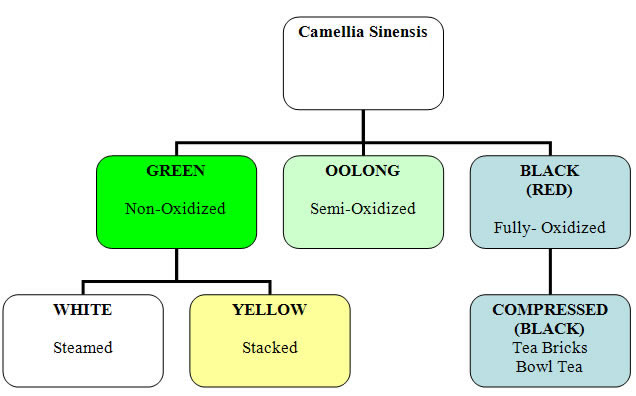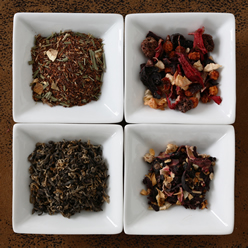What is Tea?
Tea is a beverage derived from the Camellia Sinensis plant. All black, green, oolong and white varietals are derived from the Camellia Sinensis plant.

Green tea undergoes a multi-step process of pan-firing (or steaming), rolling and drying after harvesting. Minimal oxidation occurs with green tea which contributes to leaving many of the health-inducing antioxidants (polyphenols) in tact.
White tea undergoes an abbreviated multi-step process of steaming and drying after harvesting. This process contributes to producing an antioxidant rich tea.
 Oolong tea is partially oxidized and undergoes a multi-step process of withering, pan firing and drying after harvesting.
Oolong tea is partially oxidized and undergoes a multi-step process of withering, pan firing and drying after harvesting.
Black tea undergoes a multi-step process of withering, rolling, oxidation and firing after harvesting. The process of a longer oxidation and drying process is what produces black tea.
There are other beverages that are commonly referred to as tea however are truly “tisanes” and not tea.
Herb tea is a single or blended botanical made by infusing leaves, fruits, barks, roots or flowers of almost any edible non tea plant.
Rooibos (African Red “tea’) is a South African botanical also called red bush and African Red Tea. The herb is caffeine-free and has an attractive rose-colored brew; the flavor and aroma are mild and contains small concentrations of a variety of nutrients.
Yerba Mate is a South American botanical from the holly family. It is consumed throughout much of Argentina, Brazil, Paraguay, Uruguay, the Far East and is now gaining popularity in the United States.

